An Ode to the Sagger Drill: Addressing the Modern Anti-Tank Guided Missile Problem Set
An Ode to the Sagger Drill: Addressing the Modern Anti-Tank Guided Missile Problem Set
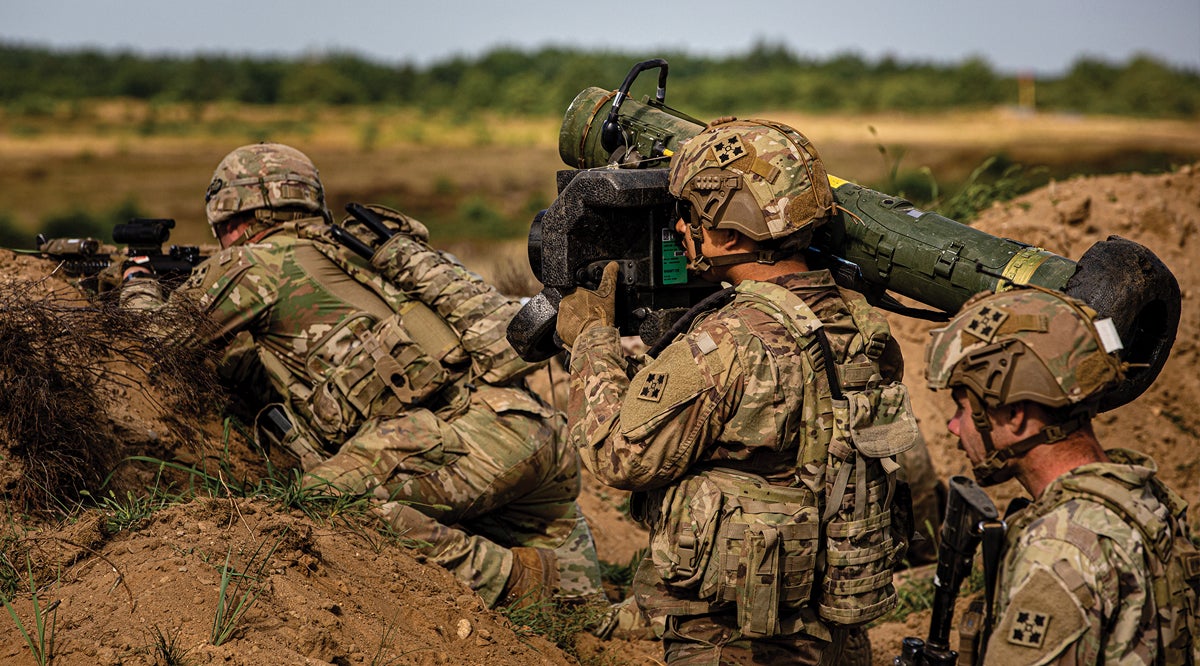
by LTC Michael B. Kim, USA
Mr. Phillip Webster
CPT Ismael M. Orozco, USA
& SFC David V. DeSantis, USA
Land Warfare Paper 155, September 2023
In Brief
- On 22 February 2023, Ukraine’s Special Forces Omega Unit uploaded a video on social media of successful Stugna-P/Skif Anti-Tank Guided Missile (ATGM) strikes on a Russian armored column. The video provided a dramatic testament to the effectiveness of ATGMs against tanks and armored platforms.
- As the U.S. Army continues the process of defining its future mission and planning its future capabilities, it must address the effectiveness and proliferation of modern ATGMs. Modern use cases of ATGMs can be traced to the 2006 Lebanon War (Second Lebanon War), where small teams of Hezbollah fighters successfully employed ATGMs against the Israeli Defense Force (IDF). Following that war, the Winograd Report provided a critical assessment of IDF capabilities and spurred a change in doctrine, training and combat platforms within the force.
- Recognizing its own vulnerability, the U.S. Army has sought materiel solutions (the Trophy System) but has not implemented a holistic solution to the problem set. Army training guidance for sections and crews needs to be updated; the last mention of any doctrinal react-to-contact drill was published in 1985. Furthermore, Army doctrine does not provide any guidance for platoon-level elements.
- This paper formulates a problem statement for armored formations based on enemy capabilities and use cases, reviews the Army’s current approach to countering ATGMs, and it provides doctrine and materiel recommendations to remedy gaps and to address the threat.
Introduction
On 22 February 2023, Ukraine’s Special Forces Omega Unit uploaded a video on social media of successful Stugna-P/Skif Anti-Tank Guided Missile (ATGM) strikes on a Russian armored column.1 The video provided a dramatic testament to the effectiveness of ATGMs against tanks and armored platforms. As the U.S. Army continues the process of defining its future mission and planning its future capabilities, it must address the effectiveness and proliferation of modern ATGMs. According to the Defense Intelligence Agency – Missile and Space Intelligence Center open-source database, 577 ATGM firings were observed in 2022 and 382 ATGM firings were observed from January 2023 to September 2023 from Bangladesh, China, India, Iraq, Pakistan, Palestine, Russia, Syria, Taiwan, Turkey, Ukraine and Yemen.2 And, over the past 10 years, over 4,000 ATGM firings worldwide have been observed in open sources. Modern use cases of ATGMs can be traced to the 2006 Lebanon War (Second Lebanon War), where small teams of Hezbollah fighters successfully employed ATGMs against the Israeli Defense Force (IDF). Following that war, the Winograd Report provided a critical assessment of IDF capabilities and spurred a change in doctrine, training and combat platforms within the force.3 Recognizing its own vulnerability, the U.S. Army has sought materiel solutions (the Trophy System), but it has not implemented a holistic solution to the problem set. Army training guidance for sections and crews needs to be updated; the last mention of any doctrinal react-to-contact drill was published in 1985.4 Furthermore, Army doctrine does not provide any guidance for Platoon-level elements. This paper formulates a problem statement for armored formations based on enemy capabilities and use cases, reviews the Army’s current approach to countering ATGMs, and provides doctrine and technical recommendations to remedy gaps and to address the threat.
The Threat: ATGM Basics
A U.S. Army combined arms battalion (CAB) will most likely face surface-to-surface ATGMs in future conflicts. Surface-to-surface ATGMs are command line-of-sight (LOS) guided—a category further broken down into manual command LOS (MCLOS), which is obsolete or obsolescent, semi-automatic command LOS (SACLOS), which is still prevalent, and laser beam riding (LBR), which is prevalent.
Air-to-surface ATGMs employ homing guidance, either with active or passive target homing, command terminal homing or semi-active laser. An example is the AH-64D-launched Hellfire missile series, which can be guided with a fire-and-forget millimeter wave radar or in semi-active mode with a laser target designator. While command LOS missiles have their fire control loop closed at the firer, homing missiles have their fire control loop closed at the missile. Although vulnerable to disruption through target movement or visual obfuscation, command LOS ATGMs are more cost-effective to produce, and they avoid susceptibility to jamming by Russian electronic warfare assets compared to homing guided systems and thus are more abundant on the battlefield.

Figure 1: ATGM Guidance Types.5
Data provided by the Defense Intelligence Agency Missile and Space Intelligence Center (DIA MSIC).
The Russian campaign in Ukraine provides a case study of some of these trade-offs. Due to growing air defense artillery coverage in Ukraine and the higher production cost of air-fired ATGMs, Russian forces in Ukraine are increasingly relying on surface-fired ATGMs. In their aerial missile platforms, they have switched to more cost-effective unguided rockets pitched at higher-than-optimal firing angles to extend the range—at the cost of significant degradation in accuracy and damage potential.6
The most prevalent and proliferated ATGM types use some form of command LOS guidance. Command LOS missiles have their fire control loop closed at the firer, requiring the gunner to maintain the LOS to the target during the entirety of an engagement. These systems tend to be vulnerable to disruption through visual obfuscation, target maneuver resulting in interruption of the LOS, and counterfire. SACLOS ATGMs are still the most common class of weapon, as they have been fielded and proliferated since the 1970s and are highly cost-effective to produce, but they are more range-limited than more modern guidance types and are susceptible to spoofing and jamming soft-kill (SK) countermeasures (CMs). LBR-guided ATGMs are becoming equally prevalent as they are also inexpensive to produce. While they have the same LOS requirements and range-restrictions as SACLOS-guided ATGMs, they are inherently resistant to SK-CMs.
SALCOS and LBR ATGM systems will, in the next two decades, be augmented by and then slowly replaced by next-generation, dive-attack, terminal homing (TH) systems. TH ATGMs allow for advantageous dive-flight profiles, which can attack thin roof armor rather than thicker frontal arc and flank armor protection.
A U.S. Army CAB will most likely face surface-to-surface ATGMs in future conflicts. The surface-to-surface ATGM threat is currently dominated by LOS ATGMs (i.e., SACLOS and LBR). Generally, manual command LOS (MCLOS) systems, such as the Russian Malyutka (AT-3A/SAGGER), are obsolete with respect to near-peer militaries. Dive-attack ATGMs using passive TH are the emergent threat but are currently a relative rarity. Almost all new systems employ some form of TH or command TH (CTH) guidance. Now, ATGMs are being widely adapted to armed unmanned aerial vehicles (UAVs) by China, Israel, Russia and Turkey, and these are being proliferated globally, albeit currently in small numbers. Modern ATGM-armed helicopters and other air platforms—and command and control and ISR (intelligence, surveillance and reconnaissance) networks—are especially needed when using long-range CTH missiles such as the Russian Legkaya Mnogotselevaya Upravlyayemaya Raketa (LMUR).
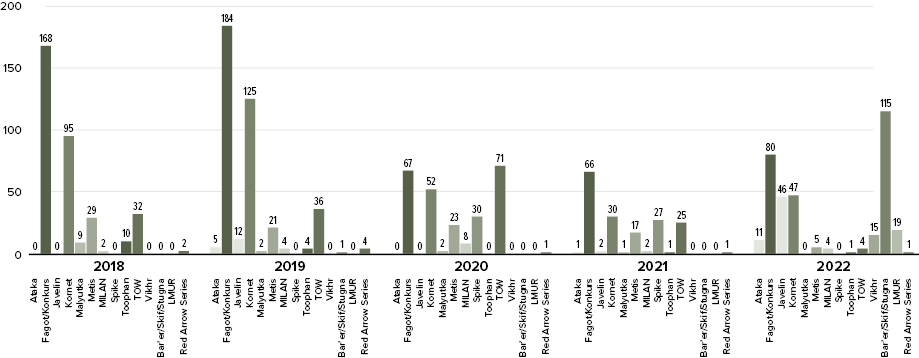
Figure 2: ATGM Usage Worldwide, 2018–Present.7 Data provided by DIA MSIC.
According to the DIA ATGM Open-Source Database, the most widely used ATGMs from 2020–2022 were the Fagot (NATO Designation AT-4 Spigot, RUS), Konkurs (NATO Designation AT-5 Spandrel, RUS), Kornet (NATO Designation AT-14, RUS), Spike (Israeli), TOW (U.S.), Javelin (U.S.) and the Bar’er/Skif/Stugna-P (Ukrainian). Except for the Javelin and Spike, all of these ATGMs are Command LOS guided.8 See details in Figures 3 and Table 1 below.
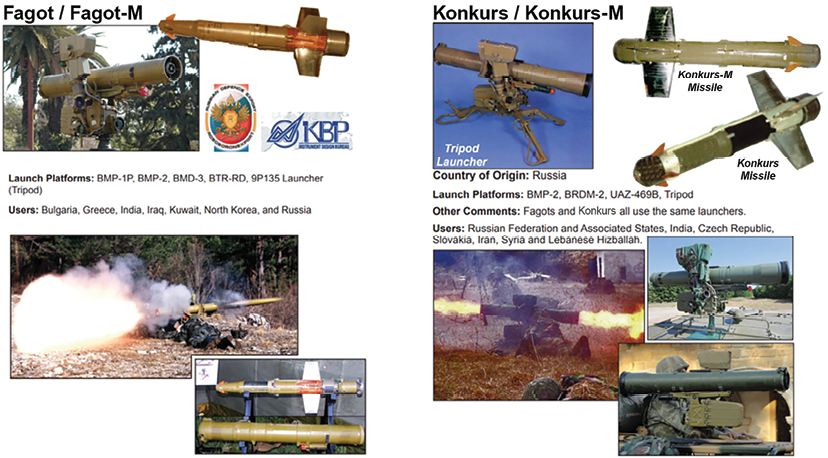
Figure 3: Fagot and Konkurs ATGM.9 Graphic provided by DIA MSIC.

Table 1: ATGMs Most Frequently Used in Ukraine.10
Many of these ATGMs can be configured into either Man-Portable platforms or vehicle mounted platforms. The benefits of the Man-Portable ATGMs are reduced targetable signature and mobility through restricted or severely restricted terrain for vehicles. Both configurations, however, require a trained team to employ against threats. Most listed ATGMs have their fire-control-loop closed at the firer and require active guidance of the missile to the target. Unlike NATO tanks, Russian tanks are configured to fire gun-launched ATGMs from their main gun. Development of this capability was likely intended to increase the stand-off distance for Russian Armor outside the effective range of the NATO Sabot and Super Sabot KE rounds and to provide a means to defend against attack helicopters. T-72A/B/M and newer tanks can fire the Invar (NATO Designation) ATGM from its main gun. The Invar can outrange the 2–3km-maximum effective range of the U.S. Sabot.11
Use Cases
Syria
From 2018 to October 2022, 561 ATGMs were fired in Syria. Of these, 277 were vehicle mounted and 284 were non-vehicle mounted ATGMs.12 295 of these ATGMs were Fagot/Konkurs, 155 TOWs and 123 Kornet variants (see Figure 4 below).
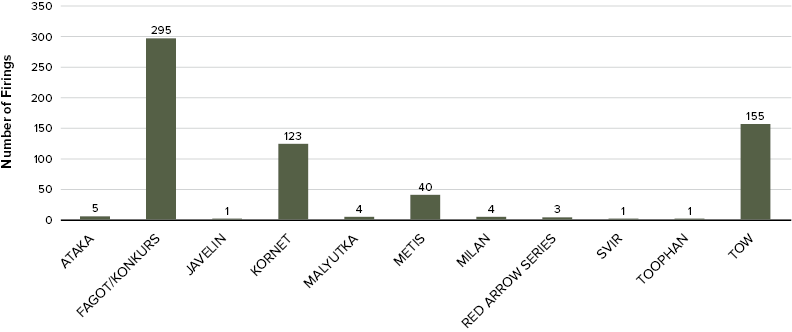
Figure 4: Number of Firings by Missile System in Syria, 2018–Present.13
Data provided by DIA MSIC.
The maximum observed and average approximate ranges of the top three most fired ATGMs are as follows: Fagot/Konkurs, approximate maximum range of 4,135m and approximate average range of 2,493m; TOW, approximate maximum range of 3,750m and approximate average range of 2,725m; and Kornet, approximate maximum range of 5,596m and approximate average range of 4,150m.
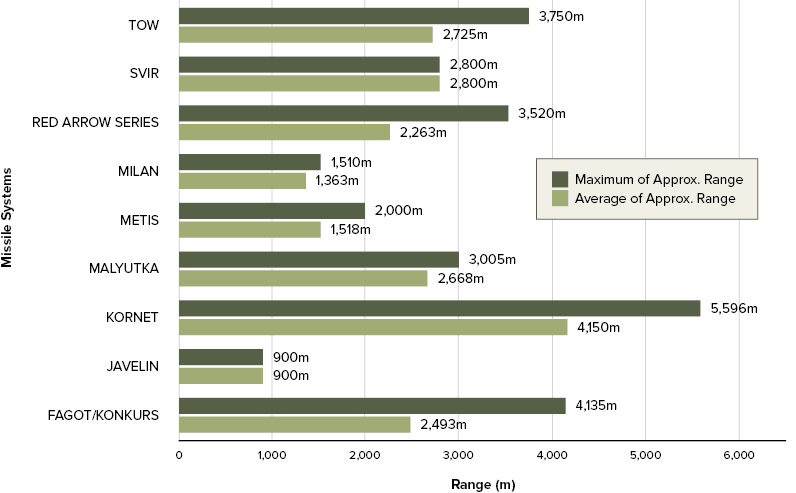
Figure 5: Maximum and Average Approximate Ranges by Missile System in Syria, 2018–Present.14
Data provided by DIA MSIC.
The use of ATGMs has been one of the defining characteristics of the war in Syria, and more than half of the ATGMs fired worldwide between 2018–2021 were fired in Syria, based on available open-source firing footage.15 Both Assad-allied forces and opposition actors have successfully employed ATGMs in great quantities. In an interview with an online freelance research outlet, Calibre Obscura, a Syrian ATGM operator, Suhail Muhammad Hamoud (also known as Abu Tow), provides some keen insight into the employment of different ATGM weapon systems. He has operated throughout the conflict and claims to have used ATGMs to hit 133 targets.16 He says he has fought over 9,000 war hours and claims to have shot eight Malyutka, two Konkurs, two Kornets and 128 TOW missiles. According to Hamoud, only seven of these shots were unsuccessful. In terms of target selection, he prioritizes tanks because, when he destroys one tank, the other tanks retreat out of fear that they are the next targets.17 Hamoud states that he uses the TOW sight with night vision optics and prefers to fight at night. He does not use drones to locate his targets; he relies on spotters and his own observations. Most informative are his techniques, tactics and procedures (TTP):
The one time I shot [and didn’t change my position] was in the western countryside of Aleppo. Then, Assad’s forces were advancing and there was only one position I can shoot from. I was targeted directly by a Russian aircraft and got my leg injured. That was my seventh injury. ATGM is fundamental in all the battles and one base is enough to stop the advancement of Assad’s forces, at least for days if not [entirely], because Assad’s forces advance under the artillery fire and the tanks shelling which make Assad’s forces think that anything on the ground will be destroyed. We have seen the tanks massacres in northern Hama countryside and southern Aleppo countryside with the start of the Russian assault. I was present in both massacres and destroyed at that time many targets.18
It is evident that coordinated ATGM use is lethal on the battlefield. ATGM target rates are high, the systems are reliable, and operators are adequately trained. ATGMs can easily outrange direct fire combat platforms, including the M1 Abrams.
Ukraine
Russia’s invasion of Ukraine began far before the Special Military Operation on 24 February 2022. Since then, 90 percent of open-source-posted ATGM firings occurred in Ukraine, with Russia predominantly employing the Fagot/Konkurs and Kornet systems and Ukraine using the Javelin and Bar’er/Skif/Stugna-P ATGM systems.
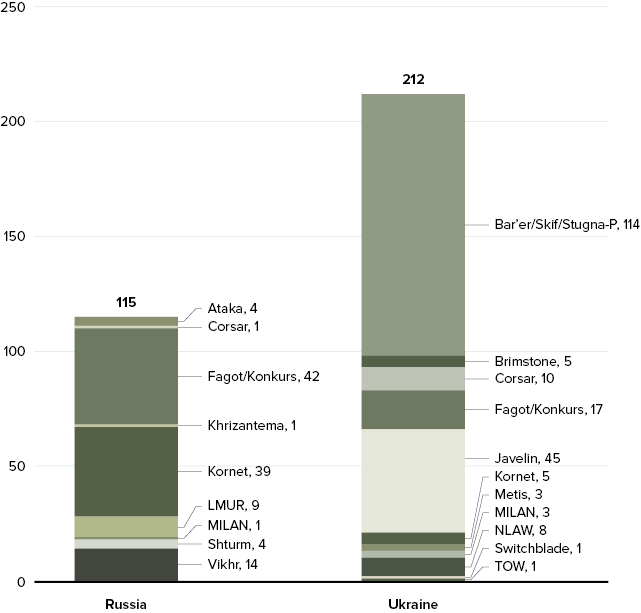
Figure 6: Number of Firings in Ukraine by Firing Country and Missile System, February 2022–Present.19
Data provided by DIA MSIC.
One difference to note between the Syrian and Ukrainian datasets on ATGM usage is the longer ranges of ATGM employment in Ukraine. In Syria, the approximate maximum range of employment for the Kornet was 5596m. In Ukraine, the Kornet-EM’s approximate maximum employment range was 7500m. The difference is likely due to Ukraine’s generally flat terrain and the resultant significantly increased sight lines, which lend themselves to longer-range ATGM employment.

Figure 7: Maximum and Average Approximate Ranges by Missile System Firings in Ukraine, 2022.20
Data provided by DIA MSIC.
In Ukraine, the Ukrainians and Russians have both fielded ATGMs to dismounted teams as well as shifted the weapon systems off larger armored military vehicles to significantly smaller civilian vehicles and all-terrain vehicles, increasing survivability as well as the chances of acquiring a target and firing ATGMs without detection. In many cases, ATGM teams have been able to acquire and fire on targets with enough time to disperse before their targets can react. Both countries have also used a type of massing technique to either deceive their targets or cause confusion. This is accomplished by the employment of multiple dismounted ATGM teams alongside dismounted infantry and/or armored vehicles with indirect fire support that follow a separate avenue of approach into their intended objective. This prevents the defending force from massing fires onto single targets and disrupts their ability to effectively employ indirect and direct fires against the attacking force. This method of attack demonstrates key doctrinal characteristics of the attack: surprise, concentration, audacity and tempo. It creates multiple problem sets to which the attacked unit must either respond or risk failure. The use of ATGMs, particularly Javelins, has been effective against the Russians due to the lack of counter-ATGM battle drills and TTPs. In most instances, armored platforms have remained in columns, unable to react effectively against the threat, allowing Ukrainian forces to use indirect and direct fires to mass on targets.
A few more characteristics of ATGMs that bear on ease of employment and likelihood of success are worth mentioning here. ATGMs can have multiple missile tubes attached to a single targeting system or single tubes with individual targeting systems. ATGM teams can coordinate and fire multiple rounds within seconds (or less than a second) at the same target, a “salvo” fire technique which can overwhelm the response capability of a target. Reloading is simple: single-use tubes are simply removed and replaced. With sufficient ammunition available, ATGM systems can service as many targets as they have targeting systems available.
Problem Statement
Modern ATGM capabilities and demonstrated use cases in Syria and Ukraine present a significant problem that U.S. armored forces will likely have to confront in any future fight: how does an armored formation defeat enemy ATGMs that can destroy friendly armor with one or multiple projectiles, can operate in depth, can out-range friendly direct fire and can be fired from multiple dismounted or mounted positions?
U.S. Army Countermeasures: Materiel and Doctrine
To address this problem, the U.S. Army has invested in materiel solutions (Active Protective System—APS) and provided limited doctrinal instruction. These measures are not sufficient to address the threat. APS only provides an initial countermeasure to buy time for the crew to find a solution, and current doctrine has critical gaps.
Active Protective Systems
APSs are designed to improve the survivability of ground combat vehicles against ATGMs, rocket-propelled grenades and recoilless rifle threats by using either “soft-kill” or kinetic “hard-kill” mechanisms.21
Soft-kill countermeasures cause a projectile to miss the target without physically interacting with the projectile itself. These mechanisms include infrared jammers, laser spot imitators, laser warning systems and radar jammers22 that interfere with the guidance mechanism or the enemy operator. As soft-kill systems do not add substantial weight or load to the platform’s armor, they are less likely than hard-kill systems to decrease mobility and firepower for the sake of protection. It is costly to outfit all platforms with hard-kill systems. A laser warning system provides crews time to react. An ATGM firing from 75 percent of its maximum range equates to 15–20 seconds of time to react if the crew is warned.23 One non-U.S. example of a soft-kill system is the Multifunctional Self Protection System (MUSS), currently installed on the German Puma Infantry Fighting Vehicle (IFV). The MUSS is designed to detect an incoming missile and to deploy laser jamming and smoke to interfere with the threat missile’s guidance.24 The core element of MUSS is the advanced sensors installed around the vehicle that can detect the radiation of a missile plume when it has been fired several kilometers away, as well as the enemy laser that is guiding the missile. This information is rapidly processed in a central computer, alerting the crew as to the direction of the threat and automatically preparing the correct countermeasure response.25 The disadvantage of soft-kill countermeasures is the specificity required for the system to be effective—each countermeasure is specific to one ATGM system and cannot be used as a general defense. For example, a millimeter wave radar jammer will not work against an infrared tracker.26

Figure 8: German Puma IFV with MUSS.27
Hard-kill systems destroy or neutralize ATGMs by intercepting them with a projectile before they can hit the target platform. Historically, forces employing ATGMs have often been able to overcome hard-kill countermeasures through changes in TTP. For example, if an APS is designed to neutralize two ATGMs, it can be overcome by the tactic of always firing multiple ATGMs in quick succession, as Chechen forces demonstrated against the Russians (after the fall of Grozny) in 1994–1996. The Chechens used urban ambushes extensively, successfully employing hunter-killer teams of 10–15 personnel that would swarm toward Russian combat platforms and volley fire RPG-7 and RPG-18 antitank missiles.28 Rather than aiming at perfect protection, by neutralizing the initial attack, hard-kill systems provide time for an element to react to the source of the ATGM threat.
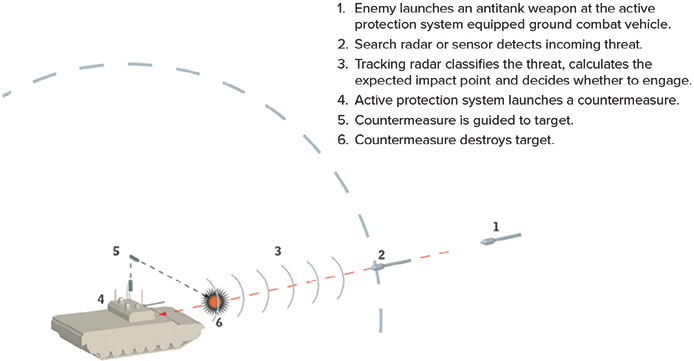
Figure 9: Sequence of Events for a Hard-Kill APS.29
In 2017, the U.S. Army initiated expedited adoption of the Rafael Trophy APS for the Army M1 Abrams, following seven years of use and operational success by the IDF. TROPHY creates a neutralization bubble around the vehicle by rapid detection, classification and engagement of all known chemical energy threats—including recoilless rifles, ATGMs, antitank rockets, HEAT tank rounds and RPGs. The system employs a network of four radar sensors, providing complete coverage of the combat platform. The hard-kill mechanism of the Trophy system activates when the ATGM reaches a specific distance from the platform; it then uses multiple explosive projectiles (melted fragments) to destroy the threat. The Trophy system is considered to be the only effective countermeasure against tandem warhead systems such as the RPG-29.30 However, while the Trophy system is effective against high-speed projectiles, the number of ATGMs it can destroy or neutralize is limited by the finite number of counter-fire projectiles onboard any one platform. Similar hard-kill systems have been adopted by the Russians (Arena)31 and Chinese (GL5).32
Doctrinal References
The U.S. Army has promulgated two training evaluation and outline (TE&O) references that provide instruction on countering the ATGM threat: 07-SEC-D9401 “React to ATGM Fire While Mounted–Section” and 17-CW-8026 “React to an Antitank Guided Missile–Crew.” There are no TE&Os above the section level. Doctrinally, Army Training Publication (ATP) 3-30-15, Field Manual (FM) 17-15 and ATP 3-21.8 all address threat ATGMs and identify them as critical threats to the platoon; however, none of these publications provides adequate instruction in addressing the threat—a significant gap in U.S. Army doctrine.33
Both 07-SEC-D9401 and 17-CW-8026 list the exact same “execute” performance steps:34
1. The crew executes react to an ATGM as follows:
a. Vehicle Commander (VC) directs driver to seek a good covered and concealed position, if available, while still trying to keep the vehicle’s frontal armor pointed toward the enemy.
b. VC fires the smoke grenade launchers, if equipped.
c. Gunner suppresses missile-producing targets if time and terrain allow.
d. VC closes the commander’s hatch if in the open or an open protected position. VC directs evasive actions and announces: “DRIVER SMOKE.”
2. The VC reports actions taken to higher headquarters.
3. The crew continues mission as directed.
These measures need to be updated as they do not reflect advancements in ATGM technology that formations will face in combat. Senior non-commissioned officers (NCOs) and officers may recall “Sagger” (AKA Russian AT-3 Malyutka) drills that were frequently conducted during Platoon Situation Training Exercises (STX) from 1992 (pre-Desert Storm) to 2001 (pre-9/11). The steps listed in 07-SEC-D9401 are specific to Sagger or Sagger-like ATGMs, based on the guidance to “keep the vehicle frontal armor pointed toward the enemy” and evasive actions. Although there are no Sagger drill references in Army doctrine, veterans may remember the “zigzag” maneuvers that were part of the sequence. These measures were only feasible due to the speed of the Sagger. With current ATGM capabilities, evasive actions are limited. These TE&Os do not provide a section or crew with adequate guidance to train on ATGM countermeasures.
The last U.S. Army doctrine that provided detailed react-to-ATGM guidance was FM 7-7, Mechanized Infantry Platoon and Squad, published in 1985. The manual provides the following instruction (see Figure 10 below):35

Figure 10: Excerpt from FM 7-7 (1985) React-to-ATGM Instruction.
Much like the TE&Os, FM 7-7 provides guidance for a react-to-ATGM focused on Sagger and Sagger-like capabilities. There is no doctrinal react-to-ATGM guidance for platoons and no instruction on how to close with and destroy the enemy. The U.S. Army must update its doctrine and tactical procedures to address modern ATGM threats.
Doctrinal and Technical Recommendations to Address the ATGM Threat
U.S. Army formations will face ATGMs in the next conflict. In order to prepare for this inevitable challenge, the U.S. Army must rethink its equipment allocation and distribution, develop a react-to-ATGM Platoon battle drill, and update its crew and section TE&Os.
The following recommendations focus on the CAB and are based on these eleven assumptions:
- U.S. Army formations will face coordinated ATGM attacks by dismounted teams who operate in depth.
- ATGM teams may use small team tactics.
- ATGM Teams can coordinate attacks with the use of small UAVs or forward observers.
- ATGM may attack utilizing offset launch systems and volleys.36
- ATGMs with laser or radio frequency emissions and systems that dive onto the target will be present in the same battlespace as direct LOS wire-guided systems.
- ATGM operators will optimize attacks in open terrain and linear danger areas.
- ATGM operators will conduct attacks at night.
- ATGM operators will move as soon as they fire, limiting the utility of indirect fire as a countermeasure.
- U.S. Army formations will not have time to react to the first ATGM hit; destruction of a combat platform or engagement of the APS initiates a battle drill.
- ATGMs will outrange U.S. combat platform direct fire.
- ATGMs will strike U.S. forces to the rear of the forward lines of troops—these areas should no longer be regarded as “safe areas” as they have been in the past.37
The U.S. Army should consider the following doctrinal recommendations:
Discussion: Formations must close extended distances to destroy the enemy. ATGMs out-range U.S. Army direct fire combat platforms. According to the Operational Environment Data Integration Network, the maximum effective firing range of an M1 Abrams is 2.5km.38 The maximum effective firing range of a Kornet-EM is 8km. Given maneuver speed of 40 miles per hour, it will take an M1 Abrams approximately five minutes to close the distance of 5.5km to destroy the threat.
- Recommendation #1: React-to-ATGM Platoon Battle Drill. The following is a Battle Drill that can be integrated as a baseline into U.S. Army doctrine:
1. Deploy APS countermeasure or ID the ATGM attack.
2. Crew announces “Missile, Missile, Missile,” deploys smoke/obscurant grenades and suppresses ATGM threat.

3. Sections break into A and B, and maneuver simultaneously either to retreat (beyond the maximum effective range of the ATGM) or maneuver on the flanks to close with and destroy the threat. Both sections must maneuver simultaneously.

4. Use micro-terrain for maneuver and call for smoke/obscurant fire to impede line of sight targeting (laser or thermal imaging).

5. Call for fire to suppress; maneuver to close with the threat.

6. Destroy threat; report to headquarters.39

- Recommendation #2: Make the following adjustment to 07-SEC-D9401 (React to ATGM Fire While Mounted–Section) and 17-CW-8026 (React to an ATGM–Crew) TE&Os:
The crew executes react to an ATGM as follows:
a. If an ATGM threat is identified, VC fires smoke/obscurant grenades to impede observation or targeting.
b. VC directs driver to disperse to either the right or left flank and seek cover behind micro terrain that will impede direct line of sight and extend distance beyond the maximum effective range of the missile.
c. VC determines whether to retreat or close the distance with the enemy.
d. VC calls for fire to suppress the enemy or calls for smoke/obscurants to impede LOS targeting.
e. VC aggressively maneuvers the vehicle to the rear or toward the threat, optimizing micro-terrain, and destroys the threat.
f. The VC reports actions taken to higher headquarters.
- Recommendation #3: Movement to contact and offensive doctrine at all levels for mechanized forces up to the brigade level need to be updated to emphasize the ATGM threat and countermeasures, such as identifying potential ATGM positions and either confirming with unmanned aircraft systems and robotic combat vehicles, then destroying them. If they cannot be located, ATGMs should be neutralized with indirect suppressive fire against likely locations in support of maneuver. Combined arms maneuver, enabled by technology such as Artificial Intelligence and unmanned platforms to decrease reaction times and reduce risk, must be trained and applied to react to the ATGM threat. Wherever possible, dismounted infantry should be used to clear and hold possible ATGM firing positions in support of mounted elements.
The U.S. Army should consider the following technical recommendations to optimize doctrinal solutions:
Discussion: Formations need the ability to locate ATGM operators during both day and night. The use of Infantry to clear ground prior to movement of armored platforms does not change. ATGMs do not emit heat, but operators do. The greatest countermeasure to dismounted ATGM teams will be dismounted U.S. formations with enhanced observation and direct/indirect fire capabilities.
- Recommendation #4: Army Scouts and Infantry formations need low-cost unmanned aerial systems (UAS) with thermal imaging and simple payloads to identify and destroy ATGM teams. The airframes and associated equipment must be inexpensive enough to be considered expendable (CL V); many veterans recall the mission degradation, not to mention pain, of recovering Ravens. Scouts and Infantry Squads in a CAB should operate low-cost UAVs with thermal imaging to identify ATGM operators and simple payloads to destroy the target (an ATGM team usually consists of one ATGM gunner and 1–3 supporting personnel). The fact remains that the infantry must clear ground before combat platforms maneuver. Enemy ATGM teams will use terrain to hide their locations—they will be difficult to find. It is imperative that Scouts and Infantry formations be given low-cost drones to find, positively identify and destroy ATGM threats.
- Recommendation #5: Army Scout and Infantry formations need more image-intensifying and thermal imaging capability for dismounts. Currently, Scouts in a CAB possess 10 PSQ-20s (enhanced night vision devices with image intensification and thermal capability) for 30 Soldiers. This is not enough. Scouts need more night vision capability to neutralize the ATGM threat. The Infantry Company in a CAB possesses 53 PSQ-20s for 137 Soldiers. The Army needs to allocate more dismount-focused, image-intensifying and thermal-imaging capability, such as ENVG-Bs, for Scouts and Infantry Soldiers in CABs.
Discussion: Formations must consider the ATGM threat an integral part of the combined arms maneuver landscape. Modern ATGMs provide challenges that may require novel applications of combined arms capabilities. Formations need the ability to “confuse the missile,” either through obscurants or soft-kill systems.
- Recommendation #6: Provide updated obscurants that hinder enemy observation and laser/thermal image guided targeting. Smoke has been used throughout the history of warfare to protect warfighters from detection by adversary’s vision and sensors. Just as modern ATGMs incorporate more advanced targeting capabilities, the U.S. Army and other forces intending to mount a defense must invest in more advanced obscurants. The technology development is underway; DARPA’s Coded Visibility program aims to develop next-generation obscurant systems that provide warfighters an asymmetric advantage, enhancing their visibility while suppressing adversary visibility and detection.40 They are working on both passive and active asymmetry approaches, which require multiple obscurant materials to be deployed in specific ways to allow one-way vision for our Soldiers while suppressing adversary vision and detection systems.41 The U.S. Army must prioritize this effort and ensure that ongoing research is tailored to the development of obscurants that can impede the laser and thermal imaging target locking of ATGMs. These obscurants can be packaged in the form of smoke grenades for tanks and 120mm mortar rounds for use by organic CAB assets. Pre-planned obscurant targets can be plotted throughout the maneuver space as a preemptive method to impede laser and thermal image targeting capabilities of ATGMs as a formation approaches likely enemy threat locations.
- Recommendation #7: Integrate radar with a layered system (integrating hard and soft-kill systems) to counter direct-fire missiles. Current hard-kill systems like the APS are directional systems; heavy formations need radar capability to detect missile threats from every direction. The Army must consider the integration of radar into a layered system that integrates soft and hard-kill capabilities to significantly decrease the probability of a successful missile hit. It is costly for the Army to implement hard-kill systems on combat platforms. A soft-kill system, such as a laser warning system, provides crews with the time to react to the ATGM threat.
Conclusion
Army leaders at all echelons have a significant responsibility to prepare their formations for war. Technologies (capabilities) are rarely the most important factor in the outcome of a fight; what is done with them is what truly matters.42 Although the principles of war may remain consistent, the implications of modern technologies to the application of combat power must be at the forefront of every planning and training evolution. Combat formations will face an enemy that is well-trained, adept at fighting at night, and competent at synchronizing multiple ATGM attacks in depth to destroy armored platforms at ranges that exceed U.S. direct fire capabilities. U.S. Army leaders must ensure that combined arms formations are prepared to address the threat.
★ ★ ★ ★
Acknowledgements
This paper is written in memory of Dr. David Johnson. He was a true scholar, warfighter and mentor. We attempted to capture key lessons learned from Dr. Johnson with a hope that they will benefit future leaders. We would like to thank Dr. Dean Nowowiejski for his mentorship and guidance. His leadership at the Command and General Staff College (CGSC) has encouraged us to explore, question and share warfighting concepts.
We would also like to thank Colonel Greg Fontenot, USA, Ret., Colonel Rich Creed, USA, Ret., (Deputy, Doctrine & Collective Training Division, Directorate of Training and Doctrine, Maneuver Center of Excellence), Dr. Les Grau (Foreign Military Studies Office), Dr. Charles Bartles (Foreign Military Studies Office), Major Shawn Scott (Defense Intelligence Agency) and Mr. Charlie Pierce (Defense Intelligence Agency) for their inputs, patience and assistance in our quest to analyze the ATGM threat.
★ ★ ★ ★
Lieutenant Colonel Michael B. Kim currently serves as the Battalion Commander for the 2d Battalion, 70th Armored Regiment, 2d Armored Brigade Combat Team, 1st Infantry Division. Prior to his current position, he served as a legislative analyst (Command General Staff College Interagency Fellow) at the Office of Management and Budget (OMB), White House, Washington, DC. He was commissioned as an officer in the United States Army upon graduation from the United States Military Academy in 2005. He holds a Master of Military Arts and Science (Art of War Scholar) from the Command General Staff College and Master in Systems Engineering from Cornell University.
Mr. Phillip Webster currently serves as a Senior Intelligence Analyst for the ATGM Systems Branch of the Defense Intelligence Agency / Missile and Space Intelligence Center (DIA/MSIC). He holds a BS in Aerospace Engineering from the Georgia Institute of Technology (Georgia Tech).
Captain Ismael M. Orozco currently serves as the Military Intelligence Company Commander for the 82nd Brigade Engineer Battalion, 2d Armored Brigade Combat Team, 1st Infantry Division. Prior to his current position, he served as the Battalion S2 for 2-70 AR, an Infantry Officer with the storied 2d Battalion, 27th Infantry Regiment, 3rd Infantry Brigade Combat Team, 25th Infantry Division as a Line Platoon Leader and Assault Platoon Leader. He was commissioned as an officer in the United States Army upon graduation from the Virginia Military Institute in 2017. He holds a BA in International Studies and Political Science.
Sergeant First Class David V. DeSantis currently serves as a Company Tactical NCO at the United States Miliary Academy at West Point. Prior to his current position, he served as the Battalion Operations Sergeant Major and First Sergeant in 2d Battalion, 70th Armored Regiment, 2d Armored Brigade Combat Team, 1st Infantry Division. He enlisted in the United States Army in 2007 and attended OSUT in Fort Knox, Kentucky, as a 19k. He holds a BS in Business Management and an associate degree in Management from Excelsior College. He has served in combat on the ATGM and MGS Stryker variants in the Arghandab River Valley, RC South, Afghanistan.
- Rob Lee (@RALee85), “Video of Stugna-P/SKIF ATGM Strikes on a Russian Armored Column by Ukraine’s Omega Unit,” Twitter, 22 February 2023.
- Major Shawn Scott, email message to author, 13 September 2023.
- Matt Matthews, “Hard Lessons Learned: A Comparison of the 2006 Hezbollah-Israeli War and Operation CAST LEAD: A Historical Overview,” in Back to Basics: A Study of the Second Lebanon War and Operation Cast Lead, ed. Lieutenant Colonel Scott Farquhar (Fort Leavenworth: Combat Studies Institute, 2009), 21.
- Colonel Greg Fontenot, USA, Ret., and Colonel Creed, USA, Ret., email message to author, 17 January 2023.
- Defense Intelligence Agency (DIA), “ATGM Open-Source Update Brief,” 21 October 2022.
- DIA, “ATGM Open-Source Update Brief,” 21 October 2022.
- DIA, “ATGM Open-Source Update Brief,” 21 October 2022.
- DIA, “ATGM Open-Source Update Brief,” 21 October 2022.
- DIA, ATGM Guidebook v4, June 2017.
- “Worldwide Equipment Guide,” Operational Environment Data Integration Network (ODIN), v3.2.2.
- “Worldwide Equipment Guide,” ODIN, v3.2.2.
- DIA, “ATGM Open-Source Update Brief,” 21 October 2022.
- DIA, “ATGM Open-Source Update Brief,” 21 October 2022.
- DIA, “ATGM Open-Source Update Brief,” 21 October 2022.
- DIA, “ATGM Open-Source Update Brief,” 21 October 2022.
- “Using ATGM in the Syrian Conflict: An Interview with Abu Tow,” Calibre Obscura, 25 December 2021.
- “Using ATGM in the Syrian Conflict: An Interview with Abu Tow,” Calibre Obscura.
- “Using ATGM in the Syrian Conflict: An Interview with Abu Tow,” Calibre Obscura.
- DIA, “ATGM Open-Source Update Brief,” 21 October 2022.
- DIA, “ATGM Open-Source Update Brief,” 21 October 2022.
- The Office of the Director, Operational Test and Evaluation, FY18 Army Programs: Active Protection System Programs, August 2019.
- Bernard Kempinski and Christopher Murphy, “Technical Challenges of the U.S. Army’s Ground Combat Vehicle Program,” working paper, Congressional Budget Officer, November 2012.
- Major Shawn Scott, email message to author, 13 March 2023.
- “The Evolution of MUSS 2.0,” Hensoldt, last modified 20 April 2022.
- “The Evolution of MUSS 2.0,” Hensoldt.
- Kempinski and Murphy, “Technical Challenges of the U.S. Army’s Ground Combat Vehicle Program.”
- “The Evolution of MUSS 2.0,” Hensoldt.
- Sean J.A. Edwards, Mars Unmasked: The Changing Face of Urban Operations (Santa Monica, CA: RAND, 2020), 29.
- Kempinski and Murphy, “Technical Challenges of the U.S. Army’s Ground Combat Vehicle Program.”
- “U.S. Army Decides on APS for M1 Anti-Armor Threat Protection,” Leonardo DRS, last modified 2017.
- Kyle Mizokami, “Watch this Rocket Try to Kill a Tank… and Watch That Tank Kill a Rocket,” Popular Mechanics, 30 June 2021.
- Michael Peck, “China’s Tanks are Getting ‘Shields’ to Protect from Rocket Attacks,” The National Interest, 15 August 2019.
- Colonel Greg Fontenot, USA, Ret., email message to author, 17 January 2023.
- Combined Arms Training Strategies, Army Training Network.
- Department of the Army, Field Manual (FM) 7-7, Mechanized Infantry Platoon and Squad (Washington, DC: U.S. Government Printing Officer, March 1985), 67–68.
- Major Shawn Scott, email message to author, 13 March 2023.
- DIA, “ATGM Open-Source Update Brief,” 21 October 2022.
- “Worldwide Equipment Guide,” ODIN, v3.2.2.
- Artist rendering, March 2023.
- “Coded Visibility,” Defense Advanced Research Projects Agency (DARPA).
- “Work Begins on Next Generation of Battlefield Obscurants,” DARPA.
- Dr. David Johnson, “What Can We Learn About Ourselves from the War in Ukraine,” Mission Training Complex, Fort Riley, Kansas, 25 October 2022.
The views and opinions of our authors do not necessarily reflect those of the Association of the United States Army. An article selected for publication represents research by the author(s) which, in the opinion of the Association, will contribute to the discussion of a particular defense or national security issue. These articles should not be taken to represent the views of the Department of the Army, the Department of Defense, the United States government, the Association of the United States Army or its members.

